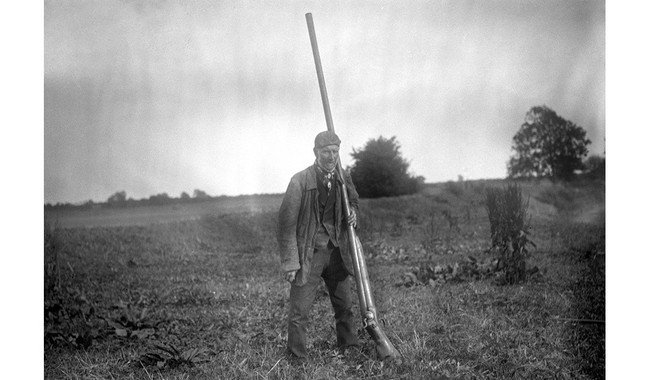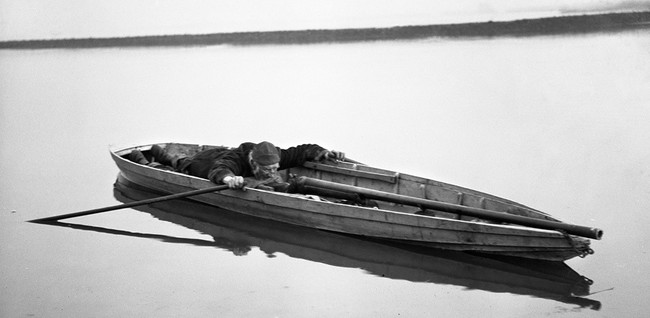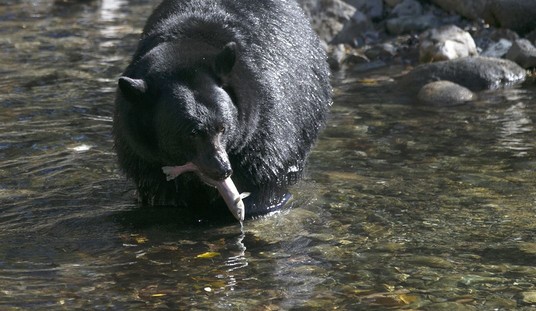Sometimes, we do things we shouldn’t.
When I was a little kid, my brother got it in his head to build what he called a “bazooka.” It was really more of a shoulder-fired blank cannon; he took a five-foot length of four-inch, inside diameter iron pipe, somehow fastened some wooden handles to it, and put a cap on one end. The exact details of construction are somewhat vague at this distance in time, but you get the idea.
Firing the thing was uncomfortable, although it was a simple enough practice. One just had to light two or three M-80s, toss them down the pipe, and aim. The “bazooka” produced a fair concussion; one day we discovered, only partly by accident, that the concussion was enough from 10 feet away to knock our cousin over and make his ears ring for a couple of hours.
The Old Man directed the disassembly of the “bazooka” and forbade any more such experiments, which is probably just as well because I had been considering mounting the thing on my canoe.
Now, I told you that story so I could tell you this one. It turns out that waterborne cannons on small boats weren’t just something I came up with. Some years later, I learned that market hunters had used their own boat-mounted artillery in the past.
Market Hunting – A Practice Now Thankfully Outlawed
Market hunting was a common practice up until the late 19th and early 20th centuries when it was outlawed in most places. Market hunting was nothing like recreational or subsistence hunting; the goal was not sportsmanship or what food a family could eat; the goal was to kill as much game as possible, as quickly as possible.
As you might imagine, that led to some horrendously unsportsmanlike practices. In the case of waterfowl, it involved a lot of shooting of sitting birds, on the water at that. But that practice also gave rise to some pretty interesting firearms, most notably the swivel-mounted “punt guns,” or, as some call them, the “duck cannons.”
Granted this was back in the day when experimentation was the order of the day in the gun trade.
See Related: Sunday Gun Day Vol. II Ep. I - The Amazing Puckle Gun
What Is a Punt Gun?
These days we’re used to thinking of a 12-gauge as big, and the 10-gauge as something of a beast, best handled in a heavy gun. But imagine a gun weighing in at over a hundred pounds, mounted on a pintle or swivel in the front of a “punt” – a low-freeboard, flat-bottom boat – and loaded with a huge charge of black powder and up to a pound of shot. That is, by any standards, a light cannon – but that’s what the market hunters of the day used to collect waterfowl in serious quantities. It wasn’t sportsmanlike and it wasn’t fair chase, but boy, were those guns something.
 A few punt guns from history really stand out.
A few punt guns from history really stand out.
Irish Tom
This is reportedly the biggest punt gun known. It was built by an unknown Irish gunmaker and ended up in the collection of one Stanley Duncan, founder of the British Association for Shooting and Conservation. Irish Tom was an honest-to-gosh cannon, weighing in at 300 pounds, and 14 feet in length. It could fire over four pounds of lead shot, propelled by 10 ounces of black powder. Irish Tom was a breechloader, and the shells must have looked like something you’d expect in an artillery piece – which is what Irish Tom really was. The gun must have needed to be firmly fixed in a good-sized boat before firing, and it’s a safe bet that the recoil drove the boat back several feet; even if it was capable of being held and fired traditionally, the recoil would have been catastrophic.
Holland & Holland’s Screw-Breech
Holland & Holland produced this as what seems to be a one-off. This gun, with an 85-inch barrel, required the shooter to unscrew the breech, load in what was reported to be a nine-and-a-quarter inch shell, then screw the breech back together. The gun was fired in true cannon fashion, by yanking a lanyard attached to the firing ring on the underside of the receiver. The gun’s weight and load specifications are not known, but it must have been impressive indeed.
Holland & Holland are better known for their very fine magnum-action bolt rifles and their even finer double rifles and shotguns. It’s interesting to see they were once in the “duck cannon” market, but smart money says the H&H punt gun was extremely well made.
The George Lawyer Punt Gun
This may have been the biggest punt gun in U.S. history. While overshadowed by Irish Tom, this behemoth still weighed in at 250 pounds and sported a nine-foot barrel. Its bore size and load are not known, but its name comes from U.S. Chief Game Warden George A. Lawyer, who apparently confiscated the piece following the passage of the Lacey Act, which outlawed punt guns and market hunting. The gun's whereabouts now are unknown; presumably, it was destroyed after its confiscation.
These are some pretty impressive pieces of hardware. Of course, they were vastly outnumbered by the general run of two, four, and eight-gauge boat cannons that were in wider use.
And the past tense in this case is probably just as well. These things were unsportsmanlike in the extreme; the market hunter’s motivation was profit, not sport or the family table.
Can I Buy a Punt Gun Now?
 Short answer: A new one? No. These guns are prized collectibles now, and some, like the Holland & Holland piece described herein, would surely command some pretty fancy prices. Apparently, a lot of them in the United States were destroyed after the Lacey Act passed, which leaves little fodder for collectors. Better to stick with more traditional shotguns, for either shooting or collecting. But a few examples do survive.
Short answer: A new one? No. These guns are prized collectibles now, and some, like the Holland & Holland piece described herein, would surely command some pretty fancy prices. Apparently, a lot of them in the United States were destroyed after the Lacey Act passed, which leaves little fodder for collectors. Better to stick with more traditional shotguns, for either shooting or collecting. But a few examples do survive.
See Related: Sunday Gun Day Vol. II Ep. XIII - Why Not the 16-Gauge?
Don’t try using it to hunt ducks, though. The market-hunting days are over, and using a duck cannon these days may have you finding yourself on a quick trip to the local hoosegow. And that’s just as well. Ducks and geese, like all game, should be available for taking by sportsmen and people wanting to put food on the table, not for commercial purposes.
History is replete with oddities, and the “duck cannon” is a curious piece of firearms technology that has no peer today. But if one was in a survival situation, well, a front-loading cannon that fired a half-pound or so of shot may come in downright handy. Not that I’m advocating for the improvised construction of any such thing, of course (but please send me a video if you decide to try it).














